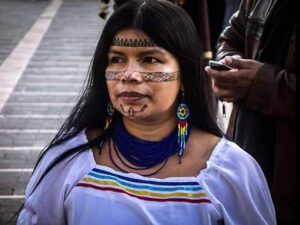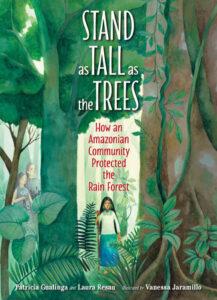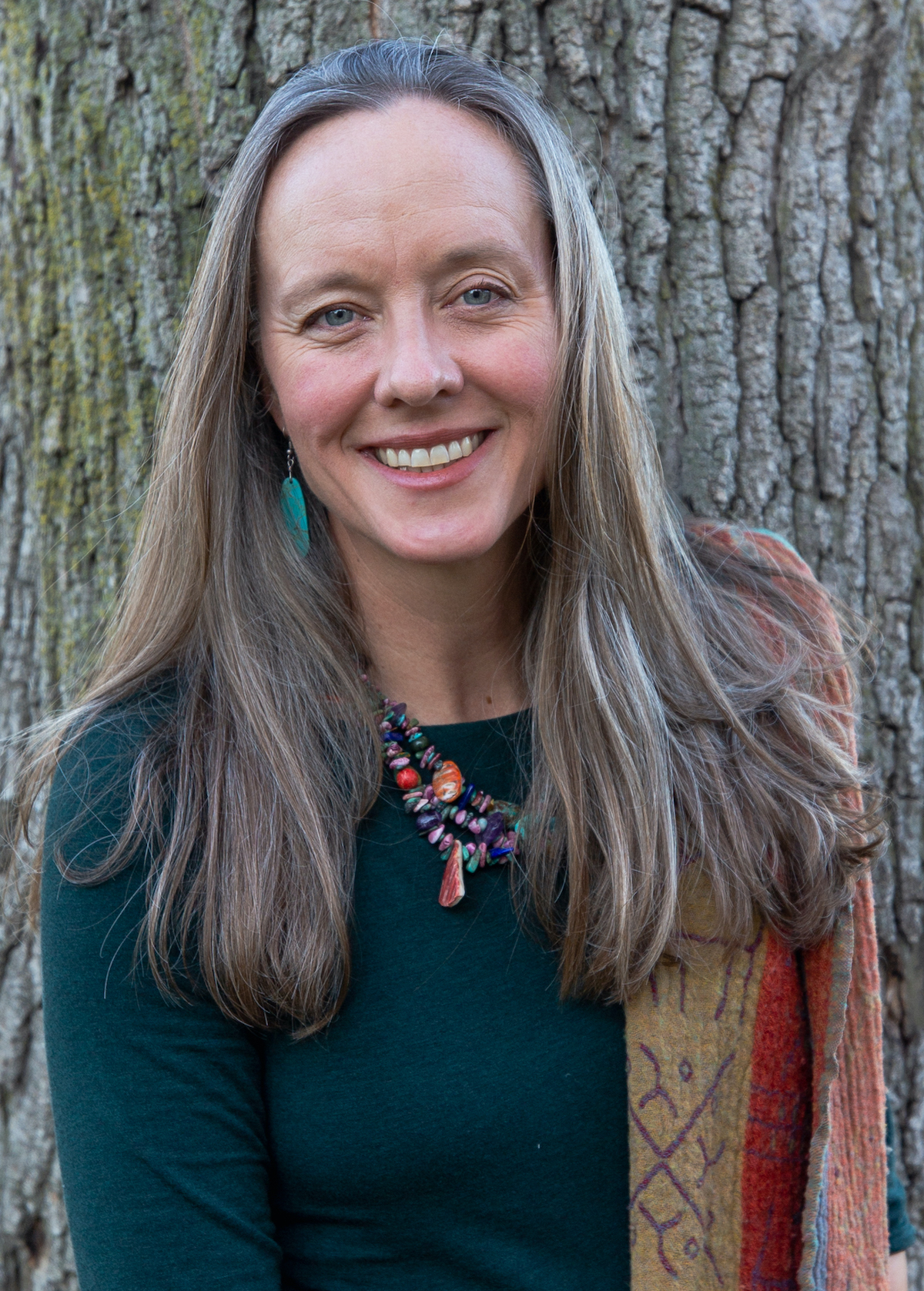Protecting and preserving the rainforest
Picture book celebrates multiculturalism, human dedication to conservation
Picture book celebrates multiculturalism, human dedication to conservation
Fort Collins author Laura Resau has collaborated with Ecuadoran activist Patricia Gualinga to tell the story of Gualinga’s hometown, a Kichwa tribal village in the Amazonia region of Ecuador. Stand as Tall as the Trees: How an Amazonian Community Protected the Rainforest, illustrated by Vanessa Jaramillo, chronicles the Kichwa tribe’s struggle to preserve their heritage and the surrounding rainforest against the threat of oil development. A vivid and socially pertinent picture book, Stand as Tall as the Trees conveys the world of rainforests through rich illustrations and a compelling and well-told, real-life story. Included within its pages is a Spanish translation, Con la Cabeza en Alto.

Patricia Gualinda
In the rainforest, mystical beings called Amazanga protect the trees, humans, and all that dwell in it. But the rainforest and its creatures are threatened by the oil industry’s plans for development. A research and development company explains to the Kichwa people that the government has sold their traditional lands to an oil extractor.
In response, the Kichwa people organize and advocate for themselves and the land. They bring their claims to the Ecuadorian government’s Court of Human Rights, understanding that environmental rights are social justice rights which affect livelihoods and traditions. (In an author’s note from Gualinga, we learn that the courts ruled in favor of the Kichwa people in 2012, but as governments change and time passes, these conflicts continue to arise and must be attended with vigilance.)

Laura Resau
Stand as Tall as the Trees is a tribute to bilingualism and multiculturalism. Resau and Gualinda include English and Spanish, as well as Kichwa words. The book teaches the reader as a parent would teach her child, without directly defining words but using gesture, or in this case through Jaramillo’s illustrations.
For any reader, child or adult, the book has relatable themes, like making a meal with family, going to school and moving from one’s original community. Through these familiarities, readers learn to care for the Kichwa community and for environmental justice, both in the Ecuadorean rainforest and in their own home communities.
Resau, Gualinga and Jaramillo actualize Margaret Mead’s mantra, “Never underestimate the power of a small group of committed people to change the world. In fact, it is the only thing that ever has.” The ending of the book demonstrates this further with the inclusion of a word glossary and back-of-book examples of other Indigenous communities from around the world that have successfully protected their land and way of life. Stand As Tall As the Trees is a story of hope, and a model of effective storytelling for children and inner children alike.
Versión en español:
Autora Laura Resau quien vive en Fort Collins, Colorado colaboró con la activista ecuatoriana Patricia Gualinga para contar sobre el pueblo kichwa donde Gualinga nació. Ubicado en la zona amazónica de Ecuador, los kichwa defienden su herencia y la selva contra la industria petrolea.
sobre el pueblo kichwa donde Gualinga nació. Ubicado en la zona amazónica de Ecuador, los kichwa defienden su herencia y la selva contra la industria petrolea.
Con la Cabeza en Alto (2023) ilustrado por Vanessa Jaramillo, es un libro infantil que abre la página al mundo de la selva.
Según el cuento, unos espíritus místicos, los “Amazangas” protegen los árboles, los seres-humanos, y todos quienes viven en la selva. Sin embargo, la selva está amenazada por la industrial petrolea. Una compañía busca fuentes de petróleo, y explica a los kichwa que el gobierno se vendió su tierra.
Como repuesta, la gente kichwa reúne, y abogan por ellos mismos y la selva. Su tribu organiza y lleva reclamos al gobierno ecuatoriano al Corte de Derechos Humanos; porque los derechos medio ambientales son derechos de la justicia social que influyen las tradiciones y el bien estar de la gente kichwa. (Según una explicación de Gualinga, uno aprende que el corte ecuatoriano decidió a favor de los kichwa en 2012, pero como los gobiernos cambian y los años pasan, los conflictos continúan. Por eso, la gente kichwa tiene que vigilar por ellos mismos.)
Con la Cabeza en Alto es un tributo al bilingüismo y la multi-culturalidad. Resau y Gualinga no solamente incluyen el inglés y el español, sino el idioma kichwa. Así el libro enseña a su lector, como una madre a su hija, la semántica sobre las palabras al usar los gestos, o en este caso, los dibujos de Jaramillo.
Por cualquier lector, niño o adulto, este libro se destaca temas comunes como cocinar una comida con la familia, ir a la escuela, o mudar de su comunidad de nacimiento a un nuevo lugar. Al incluir estos temas, el lector se aprende de preocupar de la justicia del medio ambiente, no solamente en la comunidad Kichwa sino en la suya también.
Resau, Gualinga, y Jaramillo ponen en acción las palabras de Margaret Mead quien proclama que uno jamás deba sub-estimar el poder de un grupo dedicado al cambio social para evolucionar el mundo. Al final de este texto también demuestra esto porque se incluye un diccionario de palabras con definiciones y una lista de ejemplos de comunidades indígenas alrededor del mundo que sí han tenido el éxito en proteger su terreno y manera de vivir tradicional. Con la cabeza en alto es un cuento de esperanza, y un ejemplar para todos los niños de cualquier edad.
Shelli Rottschafer (she/her/ella) completed her doctorate from the University of New Mexico in 2005 in Latin American Contemporary Literature. From 2006 until 2023 Rottschafer taught at a small liberal arts college in Michigan. Summer 2023 she began her low-residency MFA in Creative Writing with an emphasis in Poetry at Western Colorado University, Gunnison. Together with her partner and rescue pup, she resides in Louisville, Colorado and El Prado, Nuevo México.
Click here for more from Shelli Rottschafer.

